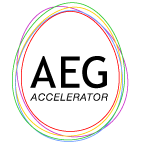
Pinterest Optimization Tools for Ecommerce Sellers
Pinterest is one of the most popular sites today. The platform has 433 million users who visit 886 billion times a month, making it a great platform for eCommerce sellers. But Pinterest does not guarantee overnight success. It requires consistency, strategy, and continued hard work. On Pinterest, consistency is rewarded.
Types of Pins for E-sellers
Planning your Pins will go a long way in your Pinterest optimization journey. If you’re posting content, you can create pins for each heading or subheading of an article, for instance. You can also make several Pins for a product using bullet points. You can create one Pin per bullet point and include separate images for each. Then, you can put together an idea Pin.
Pinterest is focused on fresh content and idea Pins because they gain traction. Product idea Pins include:
- Ways to use your product
- Alternative uses of the product
- How to set it up
- Testimonials
- User-generated content
Your last image in an idea Pin should always be a call-to-action to follow your social media profiles and a shortened URL to your product. This call to action is the most important aspect of idea Pins. When site visitors follow you, then all your Pins appear in their home feed whenever they log in.
Play the long game
A lot of eCommerce sellers have a hard time with Pinterest because it’s not an instant gratification platform. Users don’t go to Pinterest to buy today; it’s where they plan things out so they can make purchases later. The site started as a wedding planning platform. People would save Pins of items they liked and make purchases a few weeks later.
The nice thing about a Pin is that it lasts forever. The half-life of a Pin is three and a half months, so it can last for seven months. Even Pinterest ads are a long game. According to a Pinterest ad rep, it can take four to six weeks to start seeing traction after posting an ad because people need to see the ad repeatedly before committing to purchasing. So, you can get as much traction from just putting up Pins.
Remember to use content for your Pinterest URLs because landing pages are much better than a direct-to-Amazon URL. Amazon URLs can’t be disguised, meaning people won’t click on them if they’re not ready to buy your product yet.
The best lead magnets to use
Content giveaways and downloadable PDFs are the surest way to get clicks. Helpful PDFs have a better conversion rate as lead magnets than coupon codes. Even a link to a helpful or informational video can be a lead magnet.
Quizzes also work great as lead magnets. And no, I don’t mean those Harry Potter quizzes that determine which house you fall under. Choose a quiz that fits your category to lead Pinterest users to your content. Users can provide email addresses after or before the quiz, and they get content in return. Then, you follow this up with an email about things related to your product and the solution it provides. In so doing, you’re slowly leading them to understand that you have the best product for them.
Your email list is one of the only real assets an eCommerce seller owns. You could send a comparison of yours and other products in emails. This shouldn’t necessarily be a slanderous comparison. Honesty about other people’s products will build trust. Your product might not be suitable for somebody in your prospective audience, but they could recommend it to their friends because of your honesty.
Alternatives to paid ads
Paid advertising is great if it drives traffic and is profitable, but it’s not sustainable. You want to establish a stable foundation for your business. Paid advertising doesn’t guarantee that because traffic stops with it.
Pins, great content, and YouTube videos will help drive traffic to your site. Post things that won’t disappear in a short time so that people can bump into them long after they were posted. This is how people learn who you are and build trust with your product and brand.
You can lose your social media followers any day because the landscape changes regularly. So, it’s important to cross-post between Pinterest and your social media accounts. You’ll want to be consistent across all social media sites so that people know they can easily follow you.
Optimizing your Pinterest and social media hashtags
It’s crucial to use the same name for each online platform of your Ecommerce business. If you use different names, then use a branded hashtag for people to find you. A branded hashtag will allow potential customers to find you on any platform, and it should go on everything you post.
Pinterest recommends three to five hashtags, but three is preferable because it leaves more space for your description. Three hashtags to use are your branded hashtag, a relevant popular hashtag, and a trending hashtag.
Trending hashtags can be Mother’s Day hashtags, for instance. But it’s important to not use that hashtag on Mother’s Day because your post will be out of people’s feeds before they see it. The three weeks before Mother’s Day is the perfect time because the feed won’t be saturated with millions of similar posts. You’ll also stay at the top of the feeds for longer.
Using keywords to your advantage
Keywords are your way to steal somebody else’s thunder. You’re getting on the coattails of something that’s ramping up, meaning you’ll get more eyes on your posts. The best way to use Pinterest for keyword research is through the ads feature. This feature gives you the approximate search volume of each keyword.
The other tool you can use for keywords is the Pinterest trending tool. It can help you find keywords for your Pinterest titles, and it’s good for discovering Amazon keywords. For example, if you’re selling a haircare product suitable for all hair types, you can look through Pinterest trends. If curly hair is trending, then you must target curly hair in your title.
Optimize your Pinterest bio for your business
The most important thing when you start Pinterest is to optimize your bio for your business because it’ll be the first backlink for your website. So, you’ll want to use your profile to encourage clicks. If you’re an Amazon seller, put your storefront link in your profile to encourage followers to visit.
You also want to add a call to action in all your online bios. This will get people to follow you and visit your storefront. They’ll see your posts when they first log in. And if they visit, you will have an opportunity to capture their email addresses and get an opt in.
Pinterest also has boards, which are categories of Pins. Do not post any Pins or boards that are not relevant to your business. You can use secret boards instead, which nobody else sees. But it’s always better to separate your business account from personal accounts so it looks professional.
Pinterest counts on content creators to help them categorize content. And so, followable categories have a follow button that represents a different RSS feed. This feed has all your latest posts, plus a link to the image for that post.
Ensure that your titles and descriptions include a relevant category that’s followable and keywords because your goal is to get into those RSS feeds and eventually be at the top. Your goal as an eCommerce seller is to be on the RSS feed of people that follow your category because Pinterest does not show your Pins to anybody who has not shown interest in the things you’re targeting with your SEO.
You can also link your Shopify account to your Pinterest business account. This way, you link your eCommerce catalog directly to Pinterest, making your Pins shoppable. When you update Shopify, it will automatically update your Pins.
Try to create covers for your boards that are consistent with your brand colors and overall look. People will associate your board with that appearance and easily recognize your product.
Driving traffic to your Pinterest profile
The biggest thing driving traffic across the internet is user-generated content. The influencer market has changed over the years, and they have varying fees. You have Kim Kardashian types that charge millions for a shout-out. If you’re a smaller eCommerce seller, you’ll never see your return on ad spend on that. Some influencers could charge $5,000, but they can’t drive enough traffic to make that profitable.
Creators are an excellent alternative to traditional influencers, especially for an eCommerce seller. They have smaller followings, but they know their followers well. So, you can have them produce content that you can own, use, and repost elsewhere.
You could run a contest asking users to post pictures of themselves with your product, under a specific branded hashtag. That image represents to their friends that they’re recommending your product. Share the images of buyers to your profile and interact with them. This will help increase your followers across all social media platforms and drive traffic to your store.
User-generated content is in lieu of testimonials and Amazon reviews. With user-generated content, you build a followers’ list with people that actually buy from you. You may notice people who also comment more on your posts. Those are people that are passionate about your product. Ask if they can create content for you, then have them sign up as affiliates so they can make money when they refer people to your store. They’ll be motivated to continue creating user-generated content because they’re making money.
A great way to grow your following and engagement on any platform is through shoulder niches. This means partnering with Ecomm sellers who share the same audience but don’t compete with your business. This will allow you to share information and contacts because their audience might also like you.
By looking at the interactions in your shoulder niches, you can find the best followers and influencers. You can actively interact with the different posts in your shoulder niche, and when people see helpful comments, they will follow you. Shoulder niches serve as a great networking tool because they’re not direct competitors. You can do an ad or run a contest together. This is a great way to amplify your followers’ list.
Mom bloggers with 1000 Instagram followers are the best influencers because they know their followers well. And if you’re a woman-owned business or your products appeal to moms, these bloggers have Facebook groups that will promote your business for free. These women drive a ton of traffic. So, networking with them would be highly beneficial.
You can get TikTok creators to produce user-generated content, and then run a sparkle ad. This means you’re licensing their content for a certain period. When Amazon sees you driving traffic to your listing through attribution links from multiple small influencers, they’ll reward you.
E-commerce success comes down to multiple traffic streams, including Pinterest. That’s how you build a sustainable business.
This is the edited version of our workshop with Joe Reichsfeld, an Ecommerce optimizer who’s been helping brands grow since 1999. Joe is an Ecomm consultant and coach who can position small, medium-sized, and Fortune 500 brands alike. You can contact him through his website (eCommerce-optimizer.com) or by email (Joe@ecommerce-optimizer.com). He’s also on Facebook (Ecomm Optimizer), Pinterest and Instagram (Ecommerce Optimizer), and YouTube.
